We wanted to spend the whole weekend at the British Museum to see as much as possible. It's going to be very difficult to load up all 150 photos that I took over the weekend, so let's focus in on key pieces.
The British Museum is 260 years old -- the benefactor of collections of antiquities acquired by wealthy patrons, archeologists, and dedicated lay-researchers, world travelers, and collectors. The museum is free but they do ask for a donation, which we were happy to give.
The above photos are of the Queen Elizabeth II Great Court ("Great Court"), which was opened in 2000 to allow a more comfortable viewing the antiquities by the more than 6 million visitors each year.
There truly is more than two days' worth of artifacts to see. Below I have highlighted only a few of them.
Let's begin with the Rosetta Stone, one of the museum's greatest treasures. It is Egyptian, 196 BC, and provided the key to the decipherment of ancient Egyptian hieroglyphics:
The next photo is of the Nereid Monument, c. 380 BC, from Xanthos, Lykia, in southwest Turkey:
Entering the ancient Near East section of the museum, we were greeted by the colossal statues of winged human-headed lions from the North-West Palace of Ashurnasiral II at Nimrud, Neo-Assyrian c. 865 BC. These guardian figures were called "lamassu" and set up to protect the palace from demonic forces:
Among the other many exhibits in this section was this "Flood Tablet" from the library of Ashurbanipal at Nineveh, 7th century BC, and these Assyrian Palace Reliefs from around this same time period depicting warfare, winged, human-headed lions and bulls, hunting scenes, and the rulers successfully combating their enemies or prey:
Greek Islands BC pottery and artifacts:
In the Greek sculpture collection, the philosophers:
Break for lunch at the Court Restaurant on the top level:
After a delicious salad lunch, we continue . . . In one of the upper levels of the museum, we found this collection of Egyptian mummies:
Even the stairways have huge antiquities!
On the highest floor, we found these early Celtic, Roman-Britain BC artifacts:
Early swords
Combat shields
Tomb
We haven't gotten to the pictures we took of the Islamic World, more Egypt, China, South & South-East Asia, the Pacific & Australia, Mesoamerica, Central & So. America, North America, Prehistoric Europe, more Greek World, the Roman Empire, more Roman Britain, Medieval Europe, and Clocks. Yes, there was an exhibit of the very earliest clocks built up to the modern times.
You have to visit the British Museum when you have a chance, but if not, we'll be happy to show you the rest of our photos.
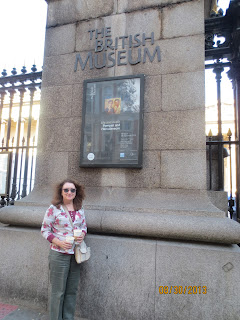














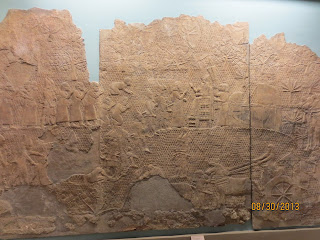






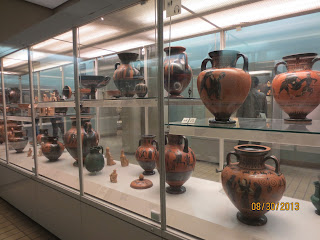

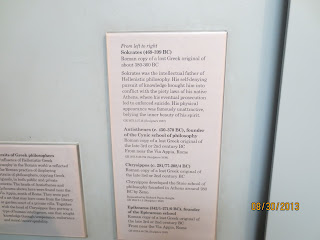

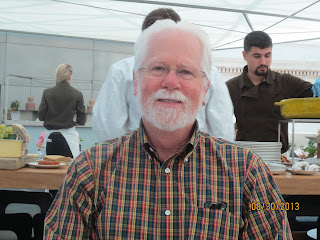
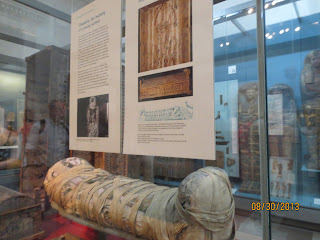
















No comments:
Post a Comment